Stefanie Tellex
UniTac: Whole-Robot Touch Sensing Without Tactile Sensors
Jul 10, 2025Abstract:Robots can better interact with humans and unstructured environments through touch sensing. However, most commercial robots are not equipped with tactile skins, making it challenging to achieve even basic touch-sensing functions, such as contact localization. We present UniTac, a data-driven whole-body touch-sensing approach that uses only proprioceptive joint sensors and does not require the installation of additional sensors. Our approach enables a robot equipped solely with joint sensors to localize contacts. Our goal is to democratize touch sensing and provide an off-the-shelf tool for HRI researchers to provide their robots with touch-sensing capabilities. We validate our approach on two platforms: the Franka robot arm and the Spot quadruped. On Franka, we can localize contact to within 8.0 centimeters, and on Spot, we can localize to within 7.2 centimeters at around 2,000 Hz on an RTX 3090 GPU without adding any additional sensors to the robot. Project website: https://ivl.cs.brown.edu/research/unitac.
Beyond Task and Motion Planning: Hierarchical Robot Planning with General-Purpose Policies
Apr 24, 2025Abstract:Task and motion planning is a well-established approach for solving long-horizon robot planning problems. However, traditional methods assume that each task-level robot action, or skill, can be reduced to kinematic motion planning. In this work, we address the challenge of planning with both kinematic skills and closed-loop motor controllers that go beyond kinematic considerations. We propose a novel method that integrates these controllers into motion planning using Composable Interaction Primitives (CIPs), enabling the use of diverse, non-composable pre-learned skills in hierarchical robot planning. Toward validating our Task and Skill Planning (TASP) approach, we describe ongoing robot experiments in real-world scenarios designed to demonstrate how CIPs can allow a mobile manipulator robot to effectively combine motion planning with general-purpose skills to accomplish complex tasks.
LaNMP: A Language-Conditioned Mobile Manipulation Benchmark for Autonomous Robots
Nov 28, 2024Abstract:As robots that follow natural language become more capable and prevalent, we need a benchmark to holistically develop and evaluate their ability to solve long-horizon mobile manipulation tasks in large, diverse environments. To tackle this challenge, robots must use visual and language understanding, navigation, and manipulation capabilities. Existing datasets do not integrate all these aspects, restricting their efficacy as benchmarks. To address this gap, we present the Language, Navigation, Manipulation, Perception (LaNMP, pronounced Lamp) dataset and demonstrate the benefits of integrating these four capabilities and various modalities. LaNMP comprises 574 trajectories across eight simulated and real-world environments for long-horizon room-to-room pick-and-place tasks specified by natural language. Every trajectory consists of over 20 attributes, including RGB-D images, segmentations, and the poses of the robot body, end-effector, and grasped objects. We fine-tuned and tested two models in simulation, and evaluated a third on a physical robot, to demonstrate the benchmark's applicability in development and evaluation, as well as making models more sample efficient. The models performed suboptimally compared to humans; however, showed promise in increasing model sample efficiency, indicating significant room for developing more sample efficient multimodal mobile manipulation models using our benchmark.
Skill Generalization with Verbs
Oct 18, 2024



Abstract:It is imperative that robots can understand natural language commands issued by humans. Such commands typically contain verbs that signify what action should be performed on a given object and that are applicable to many objects. We propose a method for generalizing manipulation skills to novel objects using verbs. Our method learns a probabilistic classifier that determines whether a given object trajectory can be described by a specific verb. We show that this classifier accurately generalizes to novel object categories with an average accuracy of 76.69% across 13 object categories and 14 verbs. We then perform policy search over the object kinematics to find an object trajectory that maximizes classifier prediction for a given verb. Our method allows a robot to generate a trajectory for a novel object based on a verb, which can then be used as input to a motion planner. We show that our model can generate trajectories that are usable for executing five verb commands applied to novel instances of two different object categories on a real robot.
SIFToM: Robust Spoken Instruction Following through Theory of Mind
Sep 17, 2024



Abstract:Spoken language instructions are ubiquitous in agent collaboration. However, in human-robot collaboration, recognition accuracy for human speech is often influenced by various speech and environmental factors, such as background noise, the speaker's accents, and mispronunciation. When faced with noisy or unfamiliar auditory inputs, humans use context and prior knowledge to disambiguate the stimulus and take pragmatic actions, a process referred to as top-down processing in cognitive science. We present a cognitively inspired model, Speech Instruction Following through Theory of Mind (SIFToM), to enable robots to pragmatically follow human instructions under diverse speech conditions by inferring the human's goal and joint plan as prior for speech perception and understanding. We test SIFToM in simulated home experiments (VirtualHome 2). Results show that the SIFToM model outperforms state-of-the-art speech and language models, approaching human-level accuracy on challenging speech instruction following tasks. We then demonstrate its ability at the task planning level on a mobile manipulator for breakfast preparation tasks.
Open-vocabulary Pick and Place via Patch-level Semantic Maps
Jun 21, 2024Abstract:Controlling robots through natural language instructions in open-vocabulary scenarios is pivotal for enhancing human-robot collaboration and complex robot behavior synthesis. However, achieving this capability poses significant challenges due to the need for a system that can generalize from limited data to a wide range of tasks and environments. Existing methods rely on large, costly datasets and struggle with generalization. This paper introduces Grounded Equivariant Manipulation (GEM), a novel approach that leverages the generative capabilities of pre-trained vision-language models and geometric symmetries to facilitate few-shot and zero-shot learning for open-vocabulary robot manipulation tasks. Our experiments demonstrate GEM's high sample efficiency and superior generalization across diverse pick-and-place tasks in both simulation and real-world experiments, showcasing its ability to adapt to novel instructions and unseen objects with minimal data requirements. GEM advances a significant step forward in the domain of language-conditioned robot control, bridging the gap between semantic understanding and action generation in robotic systems.
A Survey of Robotic Language Grounding: Tradeoffs Between Symbols and Embeddings
May 21, 2024

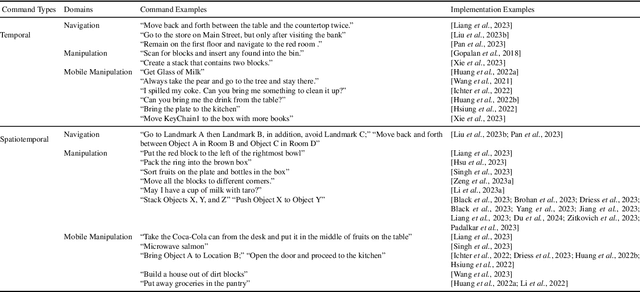
Abstract:With large language models, robots can understand language more flexibly and more capable than ever before. This survey reviews recent literature and situates it into a spectrum with two poles: 1) mapping between language and some manually defined formal representation of meaning, and 2) mapping between language and high-dimensional vector spaces that translate directly to low-level robot policy. Using a formal representation allows the meaning of the language to be precisely represented, limits the size of the learning problem, and leads to a framework for interpretability and formal safety guarantees. Methods that embed language and perceptual data into high-dimensional spaces avoid this manually specified symbolic structure and thus have the potential to be more general when fed enough data but require more data and computing to train. We discuss the benefits and tradeoffs of each approach and finish by providing directions for future work that achieves the best of both worlds.
Dialogue with Robots: Proposals for Broadening Participation and Research in the SLIVAR Community
Apr 01, 2024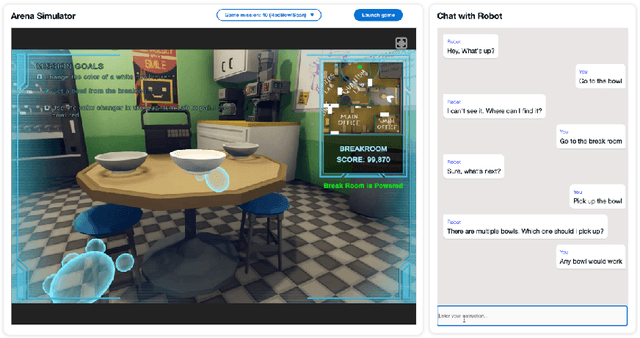
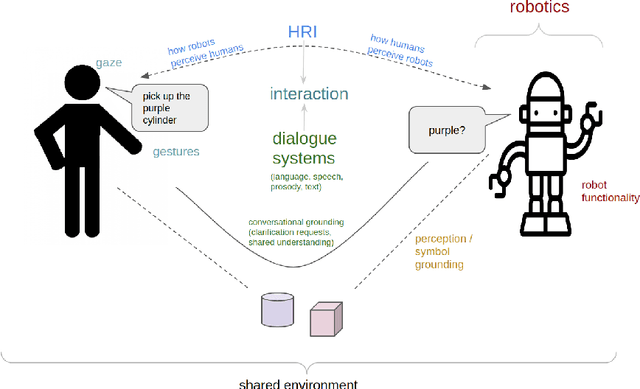
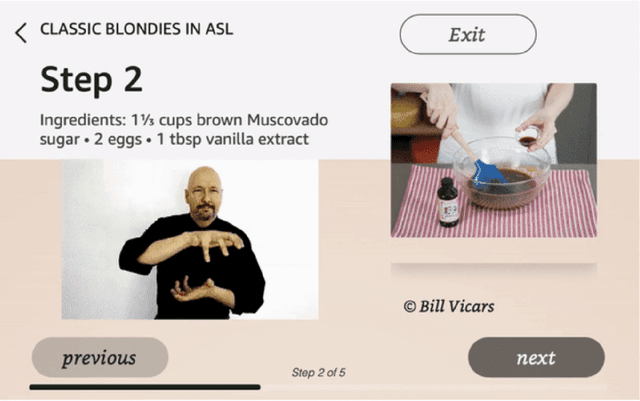
Abstract:The ability to interact with machines using natural human language is becoming not just commonplace, but expected. The next step is not just text interfaces, but speech interfaces and not just with computers, but with all machines including robots. In this paper, we chronicle the recent history of this growing field of spoken dialogue with robots and offer the community three proposals, the first focused on education, the second on benchmarks, and the third on the modeling of language when it comes to spoken interaction with robots. The three proposals should act as white papers for any researcher to take and build upon.
Verifiably Following Complex Robot Instructions with Foundation Models
Feb 18, 2024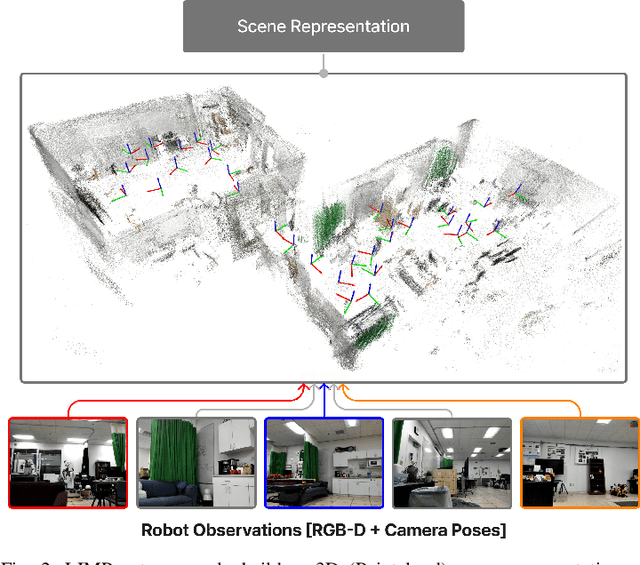
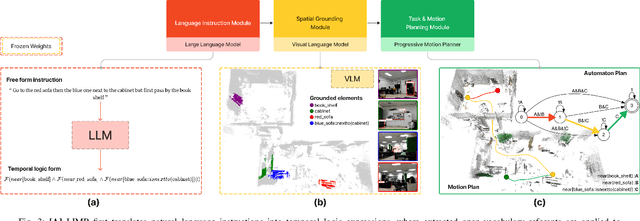
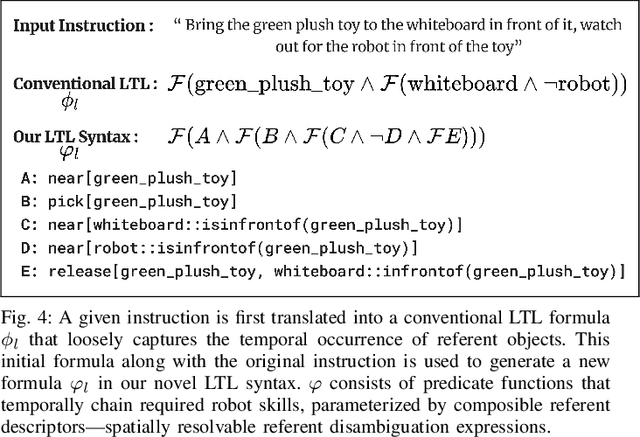
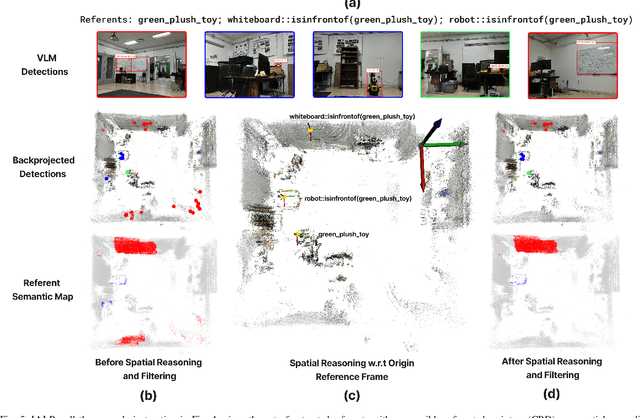
Abstract:Enabling robots to follow complex natural language instructions is an important yet challenging problem. People want to flexibly express constraints, refer to arbitrary landmarks and verify behavior when instructing robots. Conversely, robots must disambiguate human instructions into specifications and ground instruction referents in the real world. We propose Language Instruction grounding for Motion Planning (LIMP), a system that leverages foundation models and temporal logics to generate instruction-conditioned semantic maps that enable robots to verifiably follow expressive and long-horizon instructions with open vocabulary referents and complex spatiotemporal constraints. In contrast to prior methods for using foundation models in robot task execution, LIMP constructs an explainable instruction representation that reveals the robot's alignment with an instructor's intended motives and affords the synthesis of robot behaviors that are correct-by-construction. We demonstrate LIMP in three real-world environments, across a set of 35 complex spatiotemporal instructions, showing the generality of our approach and the ease of deployment in novel unstructured domains. In our experiments, LIMP can spatially ground open-vocabulary referents and synthesize constraint-satisfying plans in 90% of object-goal navigation and 71% of mobile manipulation instructions. See supplementary videos at https://robotlimp.github.io
Improved Inference of Human Intent by Combining Plan Recognition and Language Feedback
Oct 03, 2023



Abstract:Conversational assistive robots can aid people, especially those with cognitive impairments, to accomplish various tasks such as cooking meals, performing exercises, or operating machines. However, to interact with people effectively, robots must recognize human plans and goals from noisy observations of human actions, even when the user acts sub-optimally. Previous works on Plan and Goal Recognition (PGR) as planning have used hierarchical task networks (HTN) to model the actor/human. However, these techniques are insufficient as they do not have user engagement via natural modes of interaction such as language. Moreover, they have no mechanisms to let users, especially those with cognitive impairments, know of a deviation from their original plan or about any sub-optimal actions taken towards their goal. We propose a novel framework for plan and goal recognition in partially observable domains -- Dialogue for Goal Recognition (D4GR) enabling a robot to rectify its belief in human progress by asking clarification questions about noisy sensor data and sub-optimal human actions. We evaluate the performance of D4GR over two simulated domains -- kitchen and blocks domain. With language feedback and the world state information in a hierarchical task model, we show that D4GR framework for the highest sensor noise performs 1% better than HTN in goal accuracy in both domains. For plan accuracy, D4GR outperforms by 4% in the kitchen domain and 2% in the blocks domain in comparison to HTN. The ALWAYS-ASK oracle outperforms our policy by 3% in goal recognition and 7%in plan recognition. D4GR does so by asking 68% fewer questions than an oracle baseline. We also demonstrate a real-world robot scenario in the kitchen domain, validating the improved plan and goal recognition of D4GR in a realistic setting.
 Add to Chrome
Add to Chrome Add to Firefox
Add to Firefox Add to Edge
Add to Edge